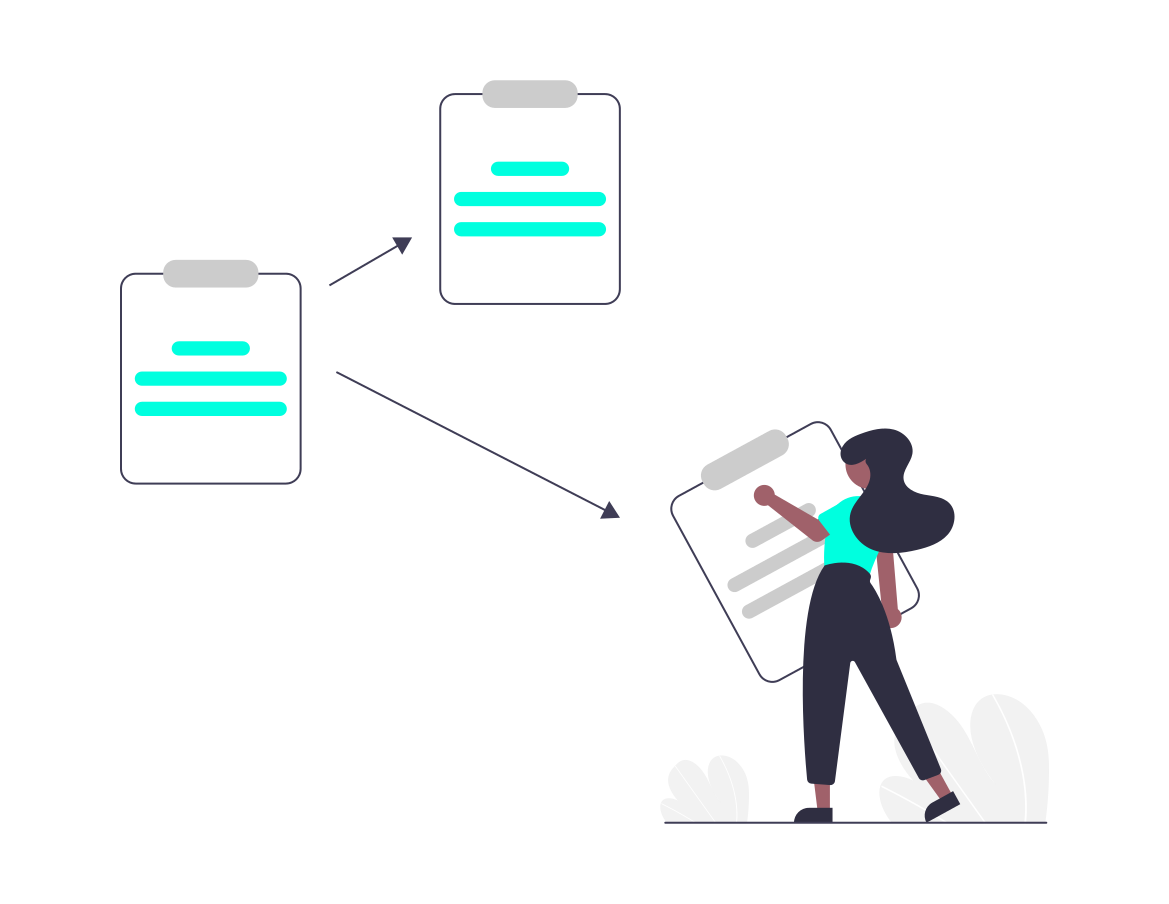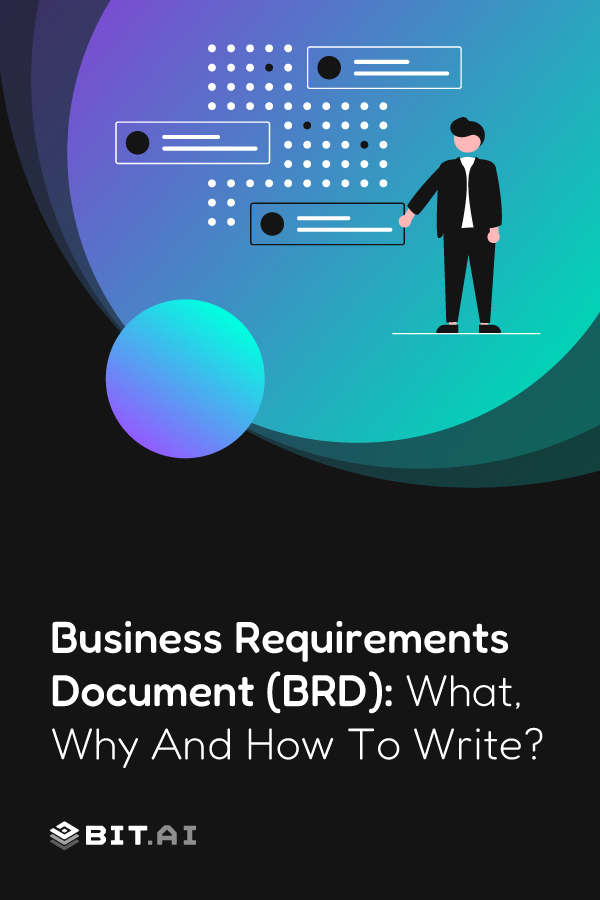Any successful project requires a well-thought-out action plan. The action plan usually involves details about what needs to be done, by whom, and what the desired outcome will look like. This is why managers often turn to documents called Business Requirements Document or BRD to get the job done.
A business requirements document (BRD) is a manager’s best friend as it provides a guiding hand to the team and assists its successful implementation. However, creating a business requirements document (BRD) can be a bit intimidating.
Collaborating with teammates, conducting the research, gathering requirements, sharing project assets, and reporting progress, can all quickly result in a chaotic mess. Using a documentation and collaboration tool can significantly reduce the effort required to create such documents and work with your team smoothly
Before we introduce you to our awesome document collaboration software, let’s take a quick look at what exactly is a business requirements document and what are the things one needs to include in these documents. Read on…
What is a Business Requirements Document (BRD)? (Definition)
A Business Requirements Document (BRD) describes in detail the business solution for the project as per business/customer/client’s needs and requirements. It includes the purpose of starting the project, what business solution does it provides, the purpose behind doing the project, its features and functionalities, and its timeline of completion.
All in all, it describes an overall concept of what the team is about to work on and what the final output will and should look like as per business needs and requirements.
Before the commencement of a project, there’s a lot of research that takes place into mapping out its overall structure, requirements, features, limitations, and more. This is why managers often start their project development with a business requirements document.
Why are Business Requirements Documents (BRD) Important?
Without a map or guide, it’s almost impossible to travel to a new city or location. Similarly, in the world of business, it’s impossible to successfully execute a project without having proper documentation and requirements in place.
A Business requirements document (BRD) is thus created before the project starts in order to get every stakeholder on the same page regarding what the project entails and what the final product will look like.

Creating a project scope document prior to the commencement of a project is crucial to make sure the team and other stakeholders are on the same page. All the parties involved in the project should have the same vision concerning the project- its goals, budget, and deliverables- so that there’s no doubtfulness and no expensive do-overs at the end.
By documenting every business need beforehand- objectives, requirements, timelines, deliverables, task allocations, etc. everyone knows exactly what needs to be done, why it’s essential, and when to get it completed.
Such documents are used as a communication tool by managers to share intricate details of the project and ensure that all expectations are met regarding the deliverables.
All in all, a business requirements document:
- Gives a complete overview of a new project or business plan, keeping everyone on the same page regarding what is expected of them and what the final product will look like
- Gathers requirements prior to project execution to ensure all client expectations are met and there’s no confusion or do-overs.
- Gives a roadmap managers can use to allocate work and budget accordingly.
- Keeps everyone focussed on the objectives.
Read more: Product Requirements Document: What, Why & How to Create?
How to Write Business Requirements Document (BRD)? Follow these Steps!
Every business project is unique depending on its opportunity, requirements, budget, timeline, etc. However, the basic structure of every business requirement document remains the same. Here are a few key elements that should be included in your business requirements document:
- Executive Summary
- Project scope
- Desired goals and project objectives
- Needs statement
- Requirements
- Identify Stakeholders
- SWOT analysis
- Limitations
- Time Frame and Schedule
- Budget and Financial Impact
Step 1: Executive Summary
The executive summary summarizes the entire document, outlining the need for the project, its requirements, and how does it tie up to your overall business goals.

Step 2: Project scope
The project scope draws the boundaries of the project and helps managers decide what is included in the project and what isn’t. Having a clear scope helps keep the team aligned and avoids unnecessary wastage of resources.
When you are clear on the outcome of a project, you are better able to describe it in your requirements document. This, in turn, helps stakeholders understand the project details in a granular manner. All project functionalities or special requests need to be included here.
Step 3: Goals and Objectives
In this section, describe the high-level goals and objectives of the project. What will the project ultimately achieve? Who’s it for? How does the project goals tie up to the overall business objective and mission? Describe in detail what success will look like, accompanying relevant metrics for performance measurement.
 To make this process easier, use SMART goals for your requirements document. The goals should be Specific, Measurable, Achievable, Relevant, and completed within a precise Timeframe.
To make this process easier, use SMART goals for your requirements document. The goals should be Specific, Measurable, Achievable, Relevant, and completed within a precise Timeframe.
Step 4: Need for the project
Provide a rationale for the project. Having a needs statement in your document helps convey the importance of the project and how it will impact the company’s bottom line in the long run.
This helps gain stakeholders’ and employees’ trust and confidence in the project and ensures smooth implementation.
Read more: Business Development Plan: What Is It And How To Create A Perfect One?
Step 5: Requirements
The next step is gathering requirements and documenting them. Know what needs to build and what is required to build it. Describe personnel requirements, budget, and other key resources needed to implement the project without any hiccups.
Step 6: Identify Stakeholders
Once you know what you need to build, the next step is to identify key stakeholders and assign roles and responsibilities. You can include each person’s name, department, and their role in making the project a success. Make people aware of what is required of them in terms of commitment and keep them accountable. This is also the space to assign tasks to remove any sort of confusion and ambiguity.
Step 7: Conduct a SWOT analysis
A flawless business requirements document (BRD) should contain a SWOT analysis of the project and how it fits in the big picture. The analysis should carefully articulate the strengths, weaknesses, opportunities, and threats that the project has. Adding this section to your BRD helps boost your credibility with upper management and external partners as it shows how aware you are of the project’s limitations and scope.
Step 8: Limitations
Specify the limitations of the project in this section. The team working on the project should be made aware of the possible obstacles they might face in the future while executing the project or any important limitations the project might have. Equip your team with the necessary knowledge as well as resources to counter such challenges without getting off-track.
Step 9: Assign a Timeframe
Write in detail, each key phase of the project and the time it would take for project completion. Having a schedule in place helps you gain credibility with lenders, clients, or upper management, while also keeping your team accountable. Make sure you have some wiggle room for any unforeseen challenges your team might face in the future.
 Read more: How to Write a Business Case: Step By Step Guide
Read more: How to Write a Business Case: Step By Step Guide
Collaborate on Business Requirements Document (BRD) with Bit
Ready to create your business requirement document? Well, we have got the perfect tool for you!

Bit.ai is a new age online document collaboration tool that helps anyone create awesome BRDs, instruction or training manuals, project plans, and other company documents in minutes. Bit makes the entire documentation process easy by allowing team members to chip in and get work done quickly.
Providing a commonplace for employees to collaborate and manage projects, Bit makes information sharing smooth as butter! With a built-in content library, store all project assets – images, files, videos, and more under one roof, and access them whenever you like.
Here are some key reasons to use Bit to create business requirements document (BRD):
- Collaborate with peers in real-time.
- Create interactive BRDs by embedding PDFs, Excel sheets, Google Drive files, Airtable blocks, charts, graphs, and more inside your documents.
- Get feedback from managers using @mentions and highlight features as every document comes with a separate comment stream.
- Create, share, and store documents related to the project in one place without going back and forth to your cloud storage services or email inbox.
- Use amazing templates to Fastrack your work.
- Share documents with clients, partners, and other external stakeholders, and get engagement insights via document tracking.
Read More: 24 Bit.ai Integrations to Make your Documents Powerful!
Few business templates by bit.ai you might be interested in:
- SWOT Analysis Template
- Scope of Work Template
- Business Plan Template
- Status Report Template
- Competitor Research Template
- Training Manual Template
- Project Proposal Template
- Company Fact Sheet
- Executive Summary Template
- Operational Plan Template
- Pitch Deck Template
Best Practices for Writing a Business Requirements Document (BRD)
Here are some tips to keep in mind while writing your business requirements document:
- Gather requirements carefully: Make sure you have proper systems in place to gather business requirements effectively. These requirements form the base for your entire project and are thus, of utmost importance. Use tools like brainstorming, surveys, polls, interviews, workshops, and more to gather requirements comprehensively.
- Don’t rush into creating your BRD: Give yourself an ample amount of time to create a BRD. Without having proper documentation and a roadmap, your project is likely to fail. Don’t rush into it.
- Welcome suggestions: When collaborating with peers or brainstorming, be open to feedback and ideas. It will bring your team closer and provide different viewpoints to better execute the project
- Prepare heavily: Your research while creating a business requirements document (BRD) should be well-versed and thorough. Preparation allows you to predict future challenges and face them head-on.
- Be clear and concise: Since BRD’s are bound to belong and text-heavy, it helps if they are written in simple language for everyone to go through it quickly. Avoid any unnecessary jargon and keep in mind that everyone reading the doc will not be technically sound.
- Research past projects: Researching past projects gives you a jumpstart on your documentation. You can quickly gouge the requirements of similar past projects and justify their existence in your current one. You can also see what worked and what didn’t, allowing you to avoid costly mistakes.
- Collaborate: Use a document collaboration tool like Bit to bring your entire project team together and devise the BRD together. With everyone chipping in with their input, we’re sure your BRD would be nothing short of greatness!
Final Words
A business requirements document is an indispensable document that needs to be taken with utmost seriousness. Once you have carefully documented all project requirements and communicated the same to the stakeholders, you put your project in a great position to succeed.
So, what are you waiting for? Gather your team around and start creating your business requirements document (BRD) today! If you need any additional tips or want to learn more about how Bit can help your projects, feel free to tweet us @bit_docs. Good luck!
Further reads:
Business Documents: Definition, Types, Benefits & Steps to Create Them!
Software Requirements Document: Definition, Steps, and Template Included!
Business Report: What is it & How to Write it? (Steps & Format)
Market Requirements Document (MRD): What, Why, and How?
16 Best Business Tools Every Business Needs in 2022
How to Create a Product Plan the Right Way?
How To Write A Business Proposal?
Implementation Plan: What is it & How to Create it?
Procurement Management Plan: What, Why, and How to Create?

Related posts
About Bit.ai
Bit.ai is the essential next-gen workplace and document collaboration platform. that helps teams share knowledge by connecting any type of digital content. With this intuitive, cloud-based solution, anyone can work visually and collaborate in real-time while creating internal notes, team projects, knowledge bases, client-facing content, and more.
The smartest online Google Docs and Word alternative, Bit.ai is used in over 100 countries by professionals everywhere, from IT teams creating internal documentation and knowledge bases, to sales and marketing teams sharing client materials and client portals.
👉👉Click Here to Check out Bit.ai.




